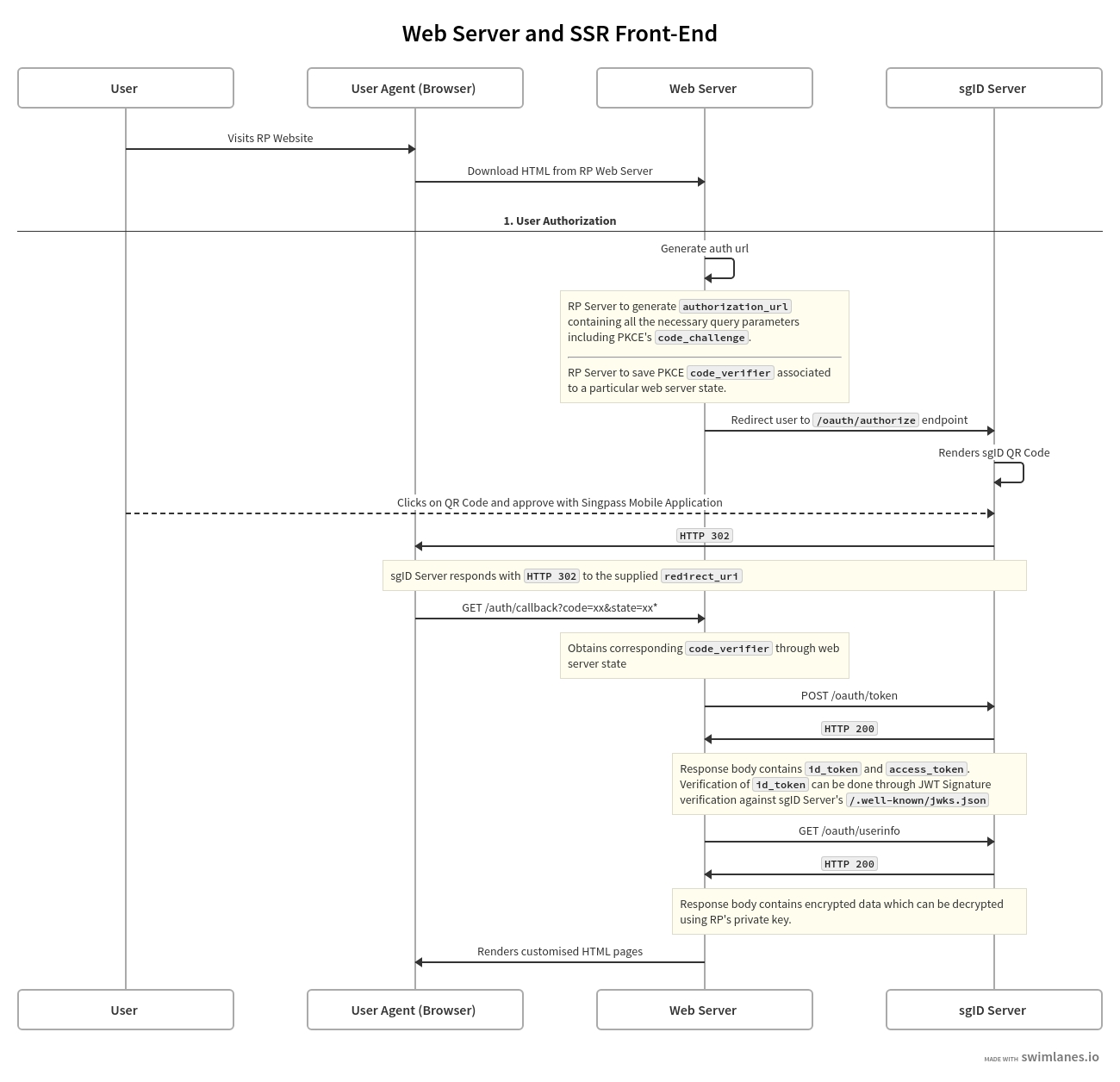Web Server and SSR Frontend
A web server runs the necessary logic to communicate with the sgID server, and generates HTML pages to be sent to the user-agent / browser where it is rendered. The process of generating HTML pages on the server is also known as server-side rendering (SSR).
Typical Flow
End user visits a website (generated by the web server) in their browser
Upon clicking on "Login with sgID", the web server generates an authentication URL and sends the authentication URL to the browser
The browser then redirects to the sgID authorization URL, where a QR code is rendered
The end user authorizes the transaction by scanning the QR code with their Singpass mobile app, and consents to share their data with the web server
Upon successful authorization, the sgID server sends the registered redirect / callback URL (associated with the web server) to the browser, which redirects to that URL
The web server receives the authorization code in the callback URL and exchanges it for an access token and ID token using its client ID and client secret
The web server then uses the access token to obtain the end user's data from the sgID server
userinfoendpointThe web server will then log the end user in and render the logged-in screen
Complete Flow Diagram
Last updated
